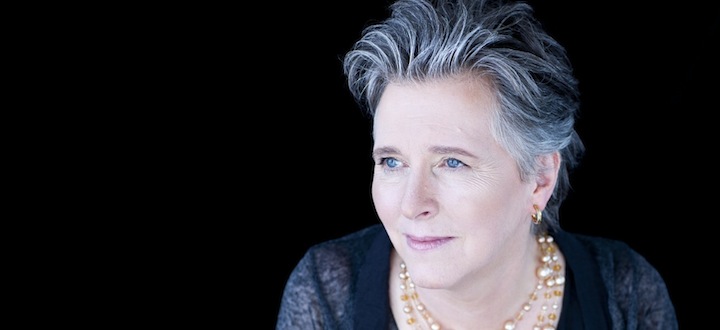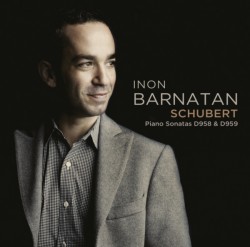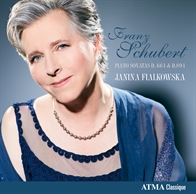
What makes a single album stand out when 99 out of 100 recordings feature impeccable technique and careful musical polish and when the core of the classical canon gets recorded over and over again by each new generation of musicians? It is a personal matter of luck, like finding the the right romantic partner in a sea of eligible singles.
- Classical Music 101: What Does A Conductor Do? - June 17, 2019
- Classical Music 101 | What Does Period Instrument Mean? - May 6, 2019
- CLASSICAL MUSIC 101 | What Does It Mean To Be In Tune? - April 23, 2019
This situation includes two worthy new albums of piano sonatas by Franz Schubert (1797-1828): One by Inon Barnatan on the Avie label featuring two of the composer’s last three — C minor (D958) and A Major (D959) — plus the sweet Op. 90 No. 3 Impromptu; and an ATMA Classique release by Janina Fialkowska of the No. 13 in A Major (D664) and No. 18 in G Major (D894).
 Both are flawless albums — but each comes from a different starting point.
Both are flawless albums — but each comes from a different starting point.
Barnatan approaches Schubert as a virtuoso pianist who needs to make a statement with each phrase. Fialkowska approaches Schubert as a partner in a conversation between her fingers, Schubert’s ghost and the spirit of Vienna just a decade after the death of Jane Austen (to put it into cross-cultural perspective).
The first is for a concert hall; the second for a drawing room.
But since the most likely conduits on the listening end are your earbuds, the choice lies in personal preference.
Both pianists bring impressive polish and poise to the keyboard. Barnatan pushes the sound just that much more, trying harder to underline the dramatic transitions between extroversion and introspection and light and darkness in the music. Fialkowska is no shrinking violet in her sonatas, but she brings a hint more restraint to the music: we, as listeners, have to bend forward a touch more and listen a bit more carefully in the process. Barnatan makes sure all the music gets to our ears without any effort on our part.
Both pianists also know how to make Schubert sing — the key to appreciating anything he wrote. Fialkowska, to my ears, provides a slight bit more modulation with each phrase, as well as more discreetly tasteful changes in tempo (known as rubato) throughout to underline the progress of the narrative.
 Overall, I am seduced by Fialkowska’s Schubert and left feeling that Barnatan is too extroverted to sustain my admiration — but, as marketing disclaimers might like to say, results can vary depending on who is listening.
Overall, I am seduced by Fialkowska’s Schubert and left feeling that Barnatan is too extroverted to sustain my admiration — but, as marketing disclaimers might like to say, results can vary depending on who is listening.
Although Fialkowska is playing on the sparkling modern Steinway at the Palais Montcalm in Quebec City, I can close my eyes and picture an early 19th century drawing room. I can conjure up the conflicted psychological world embedded in Schubert’s music.
This is as it should be — for me, anyway. And that’s the wonderful thing about the variety of recordings. Like the variety of personalities and looks at the singles’ bar, there’s something for everyone.
For all the details on Fialkowska’s album, click here.
For all the details on Barnatan’s album, click here.
John Terauds
- Classical Music 101: What Does A Conductor Do? - June 17, 2019
- Classical Music 101 | What Does Period Instrument Mean? - May 6, 2019
- CLASSICAL MUSIC 101 | What Does It Mean To Be In Tune? - April 23, 2019



